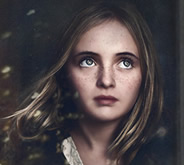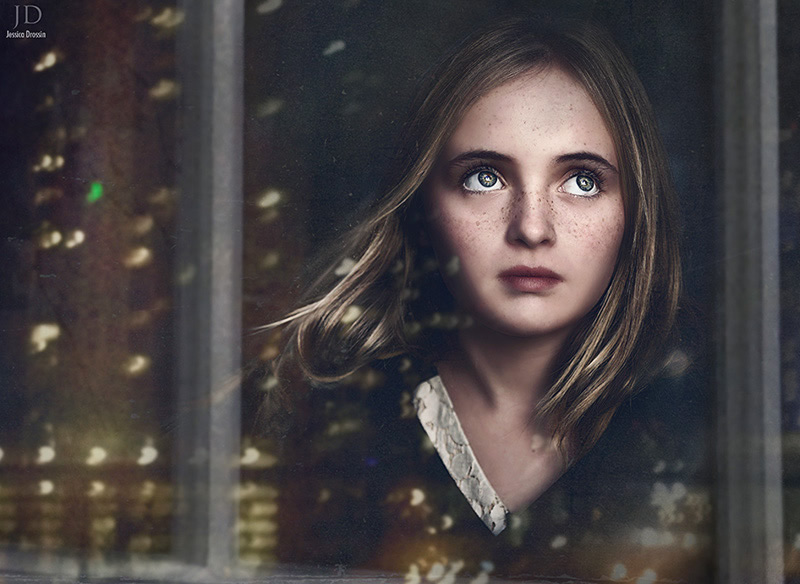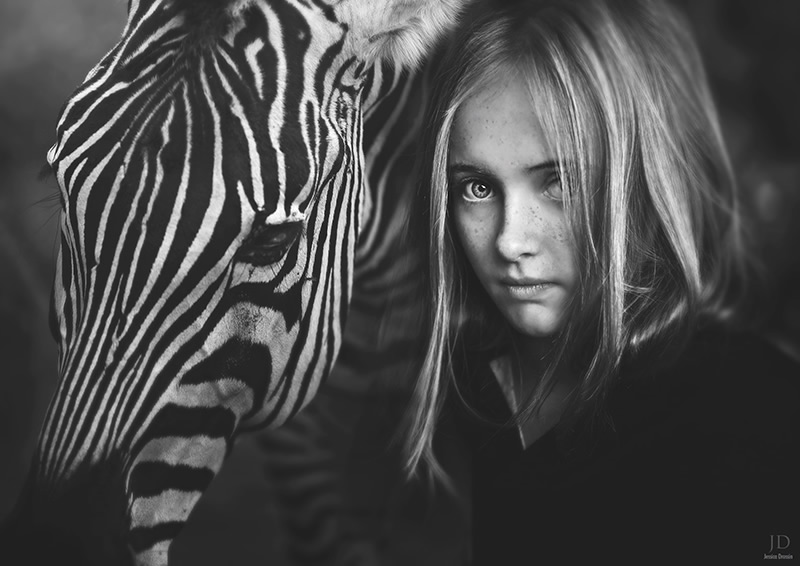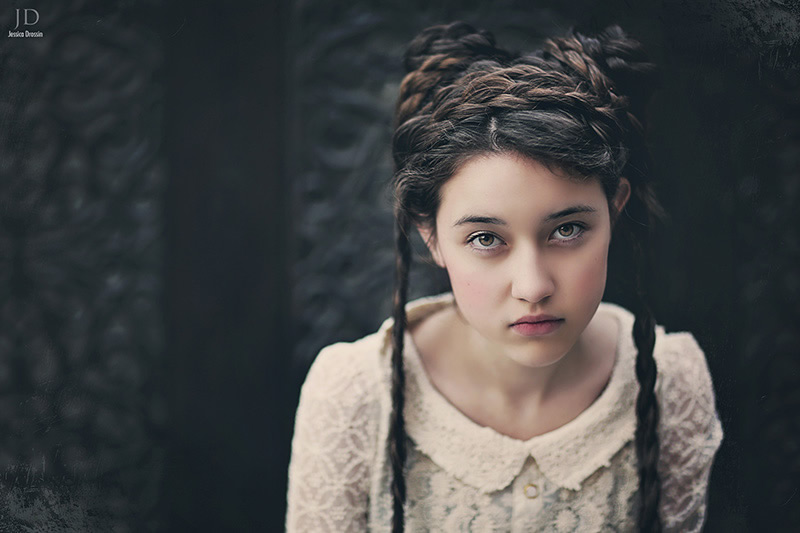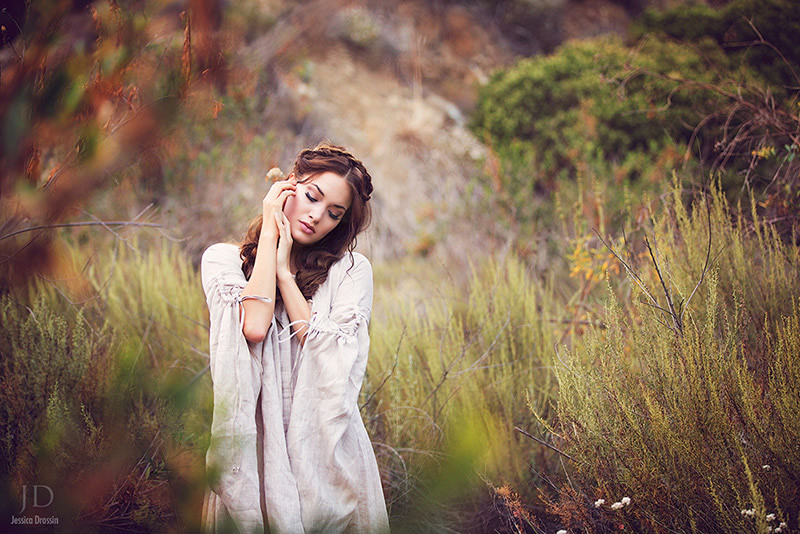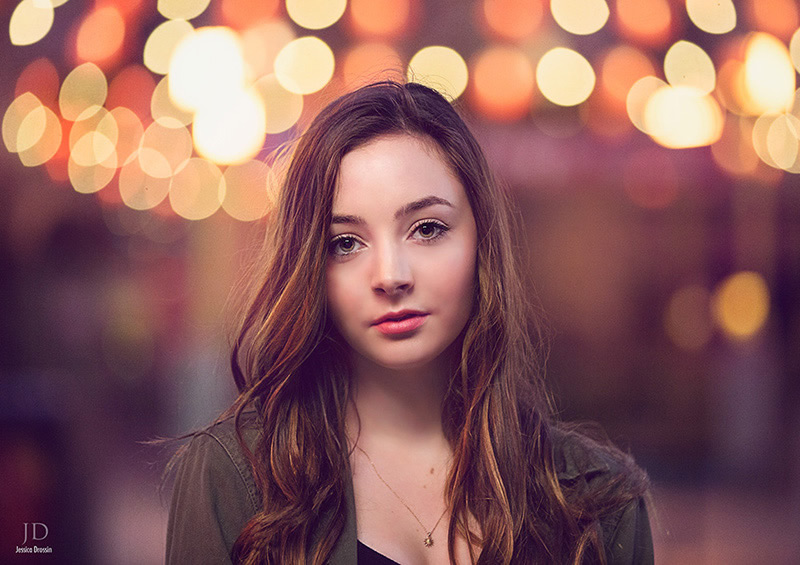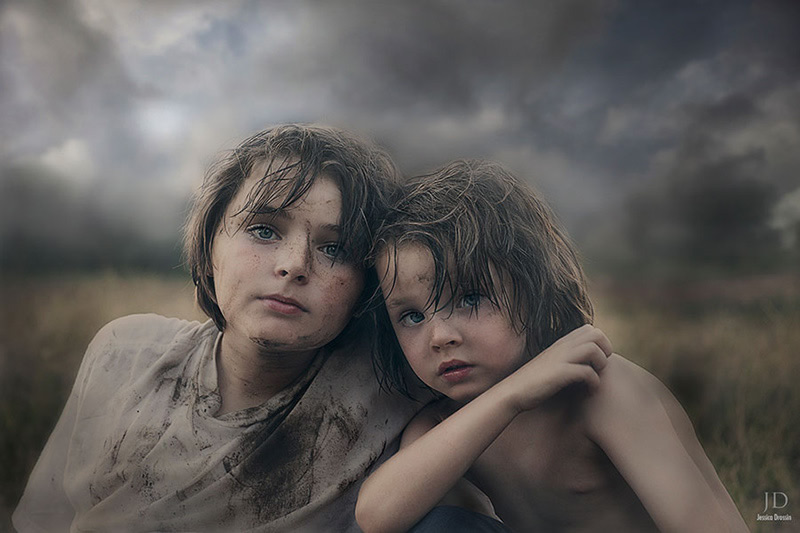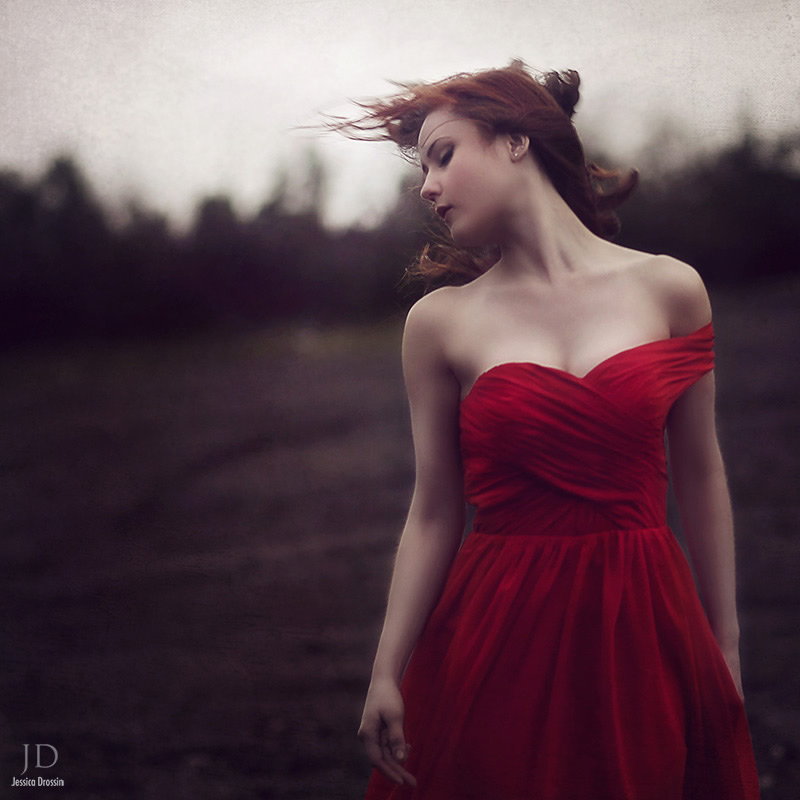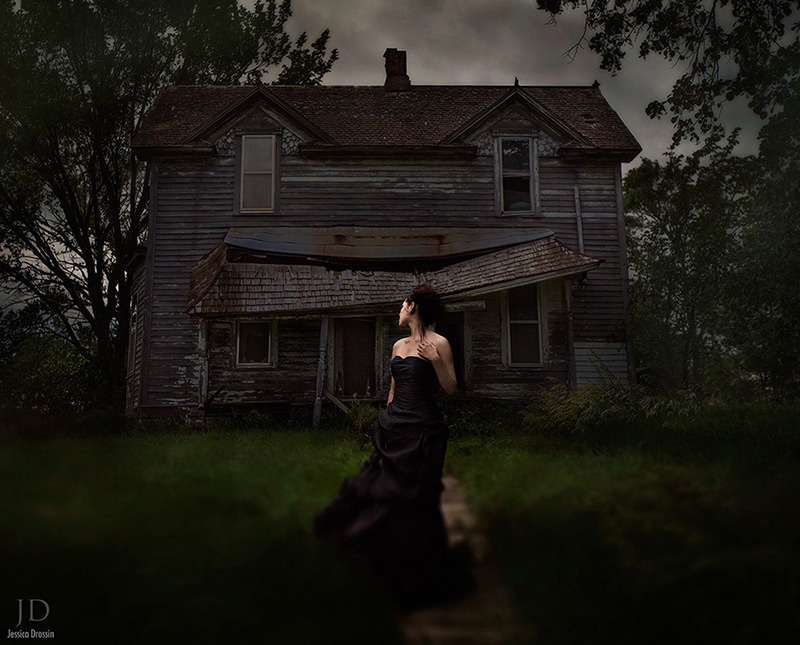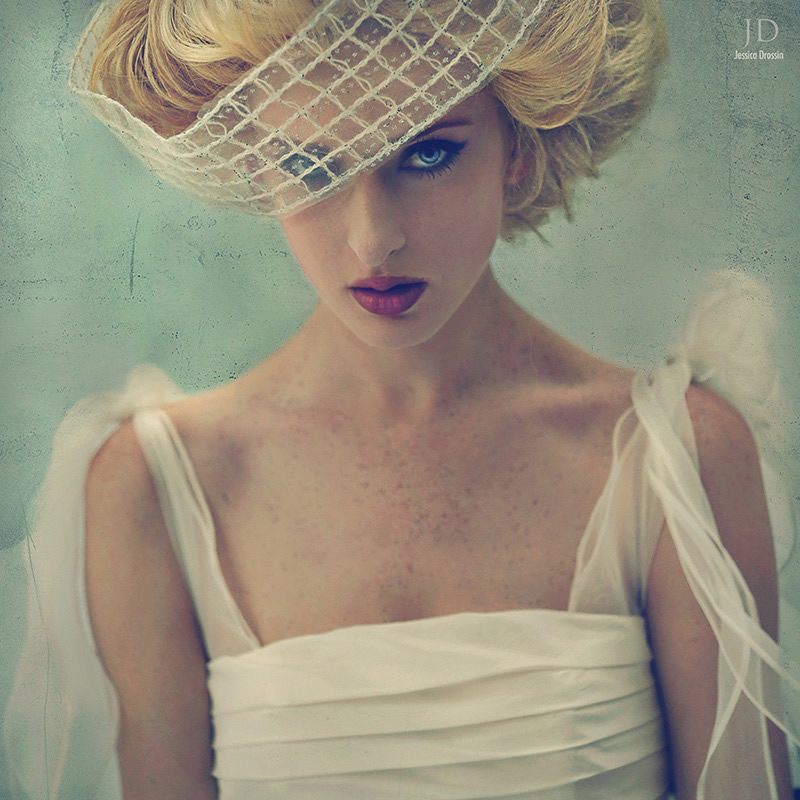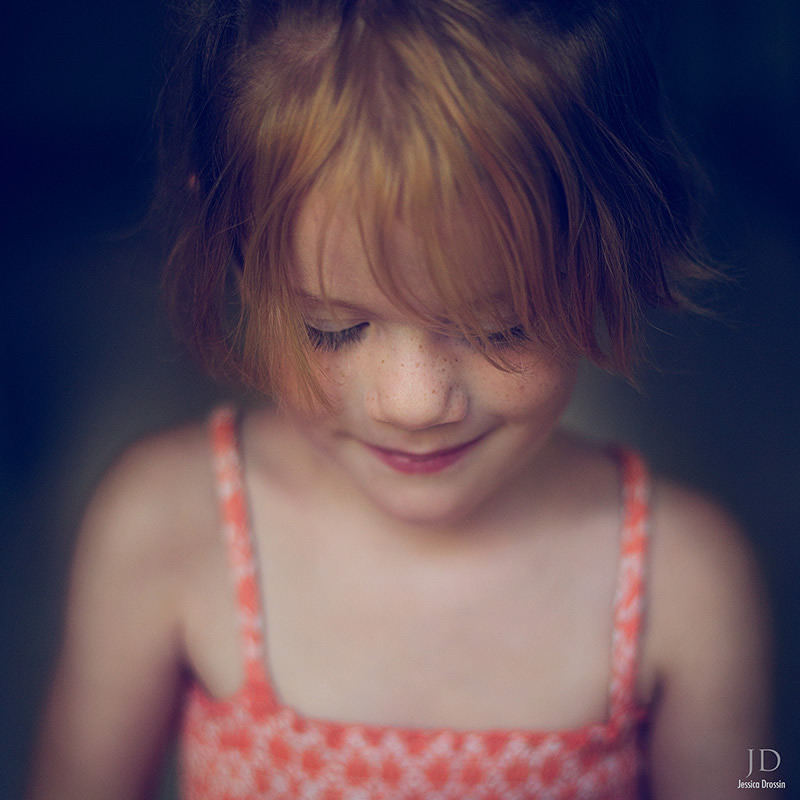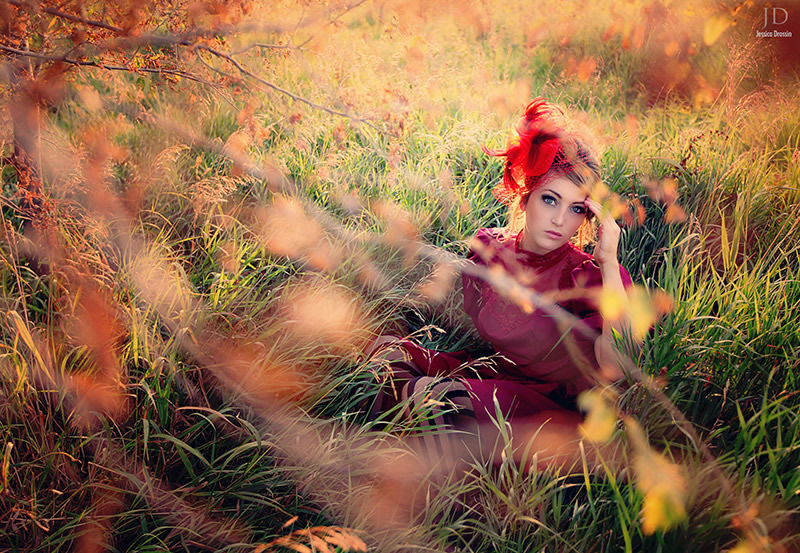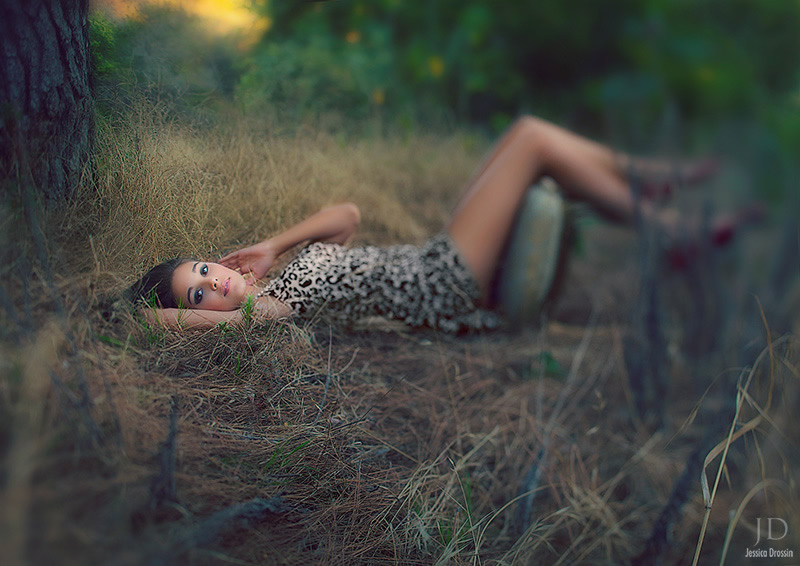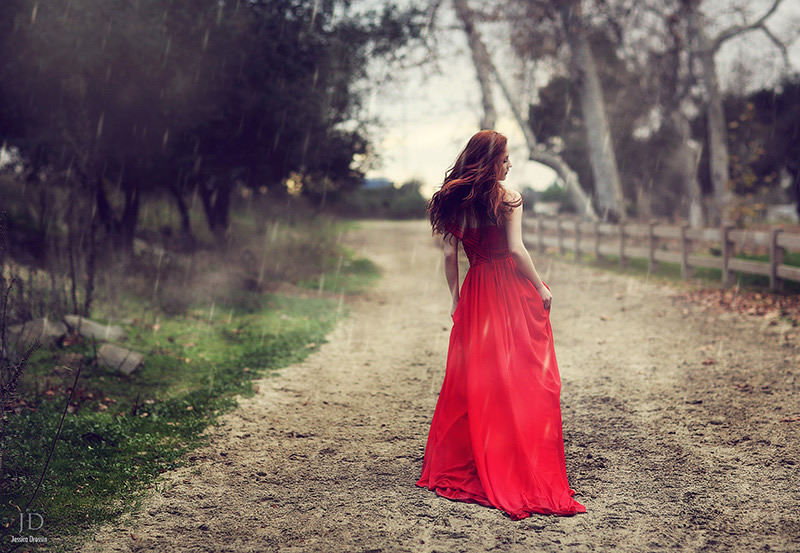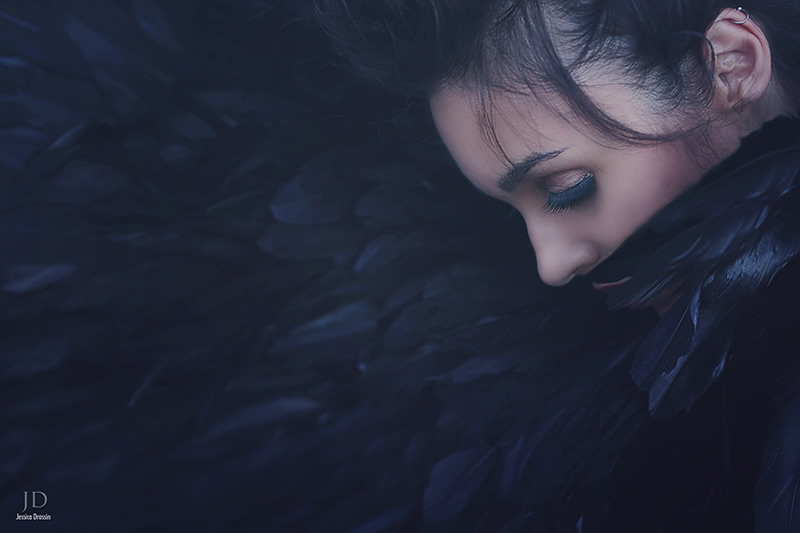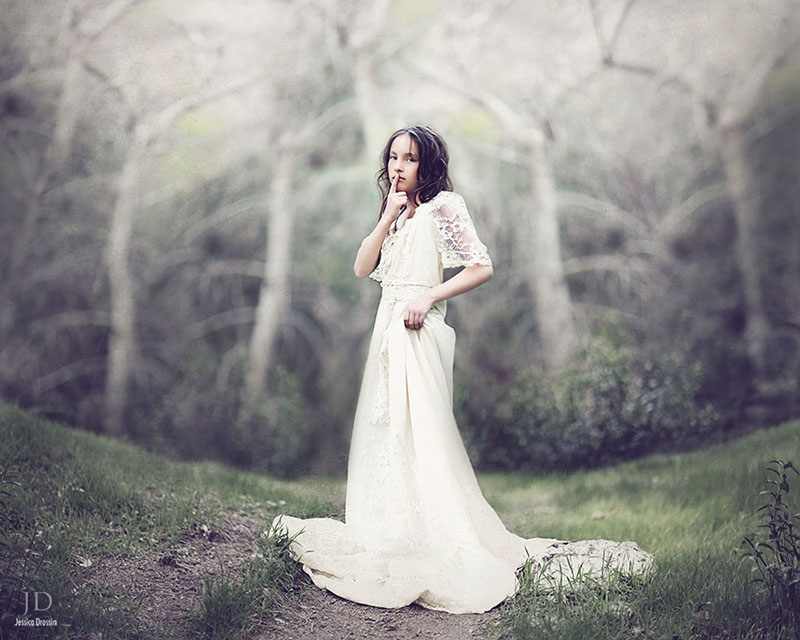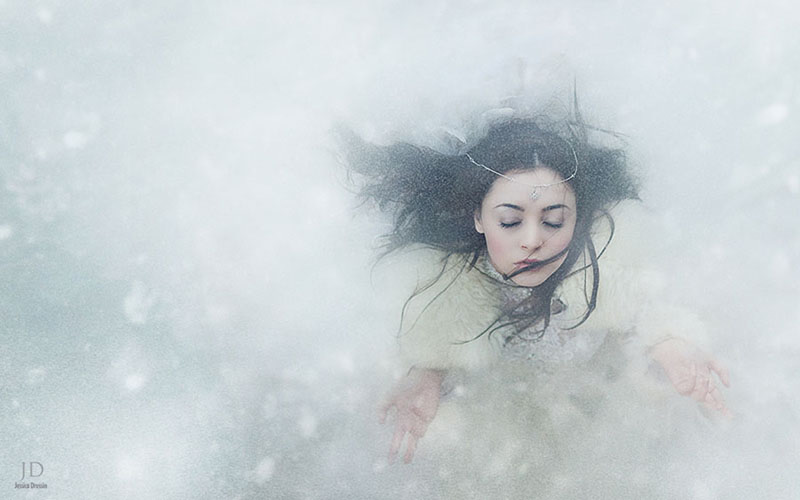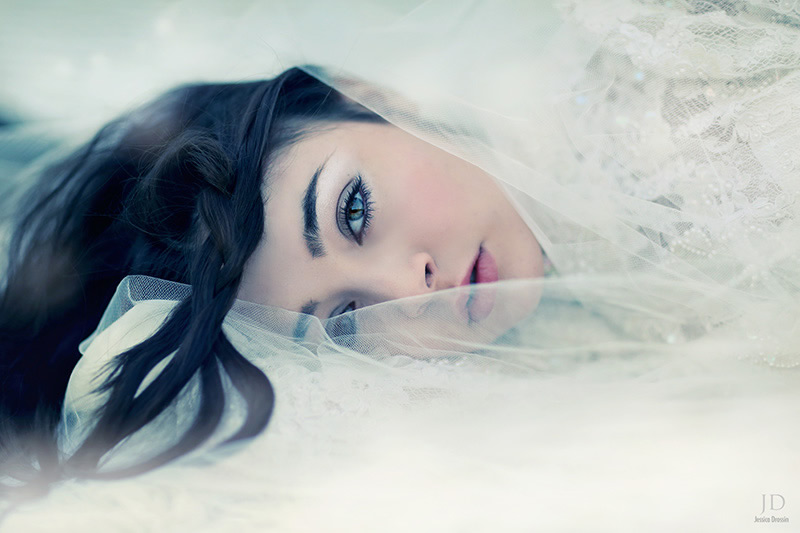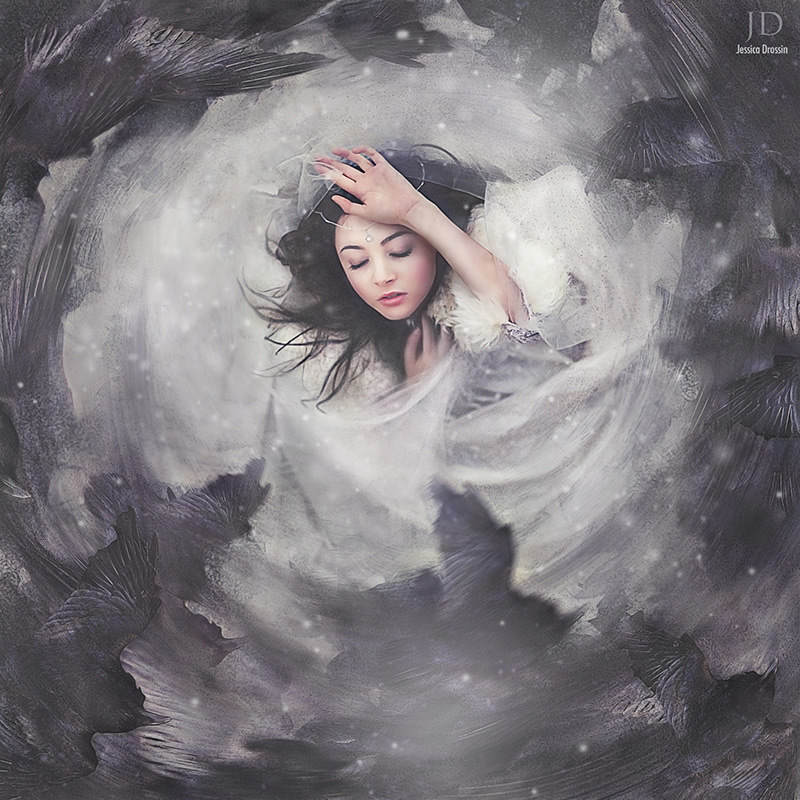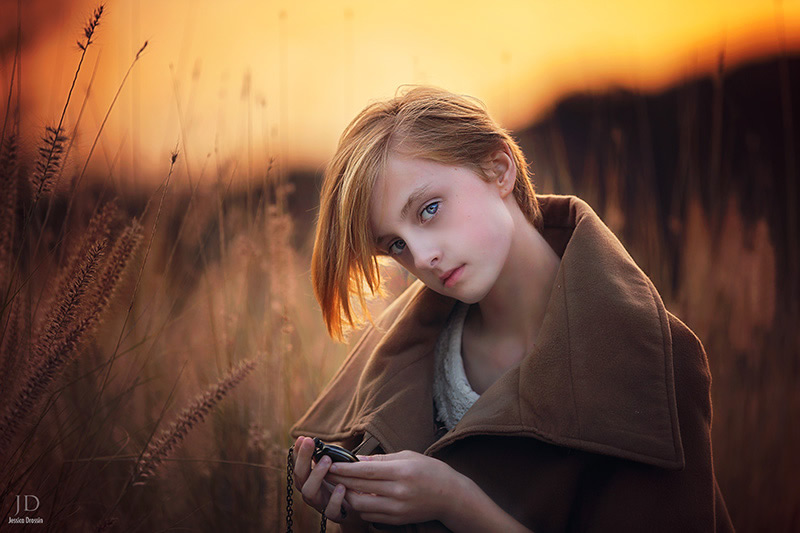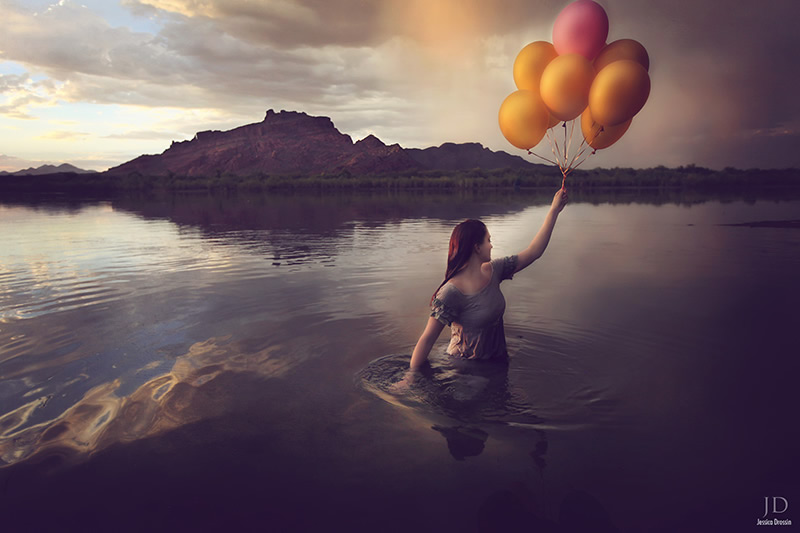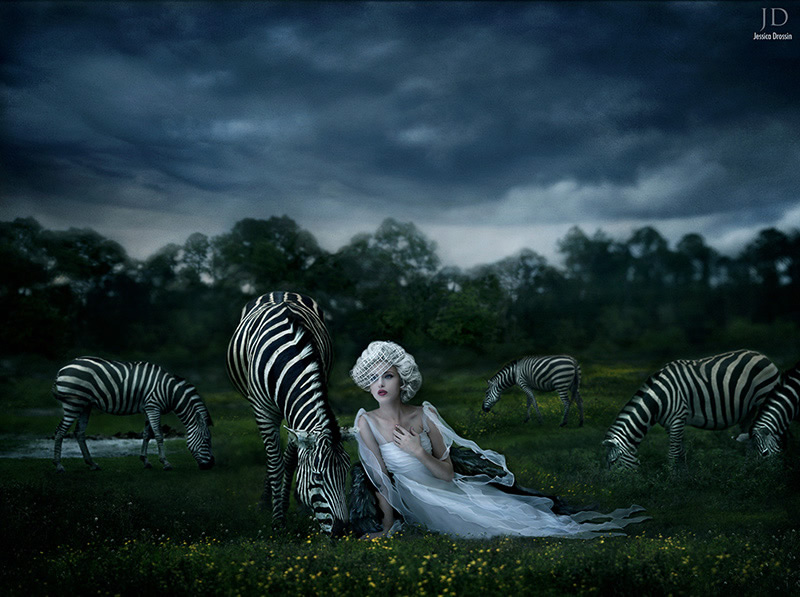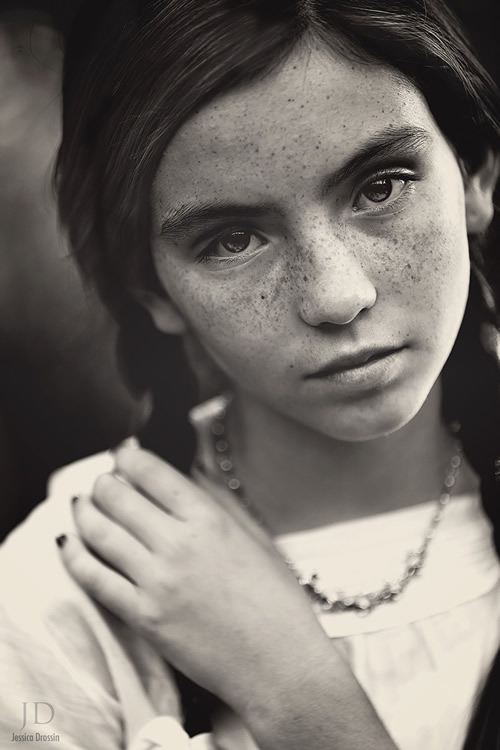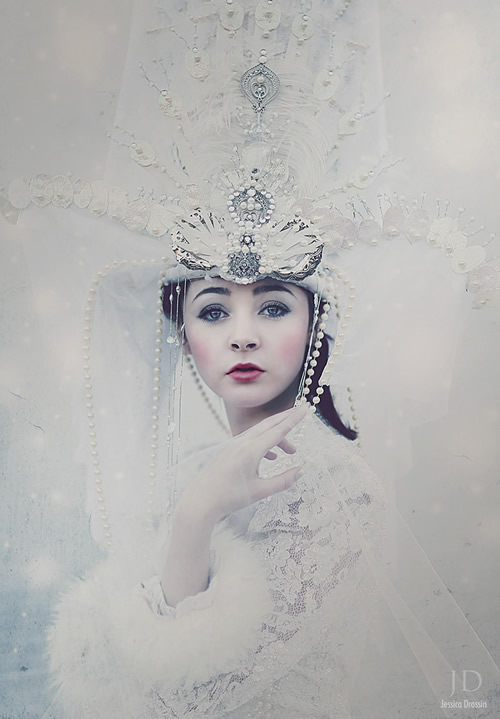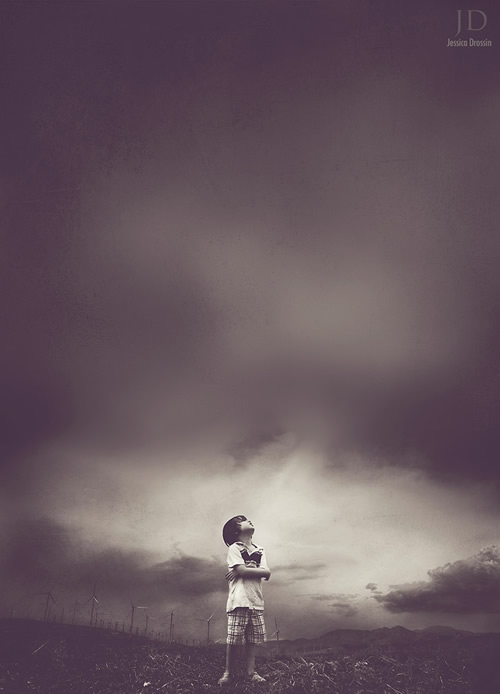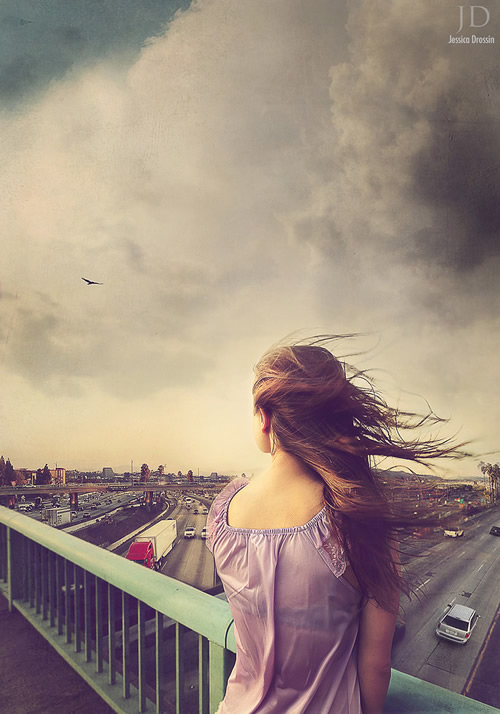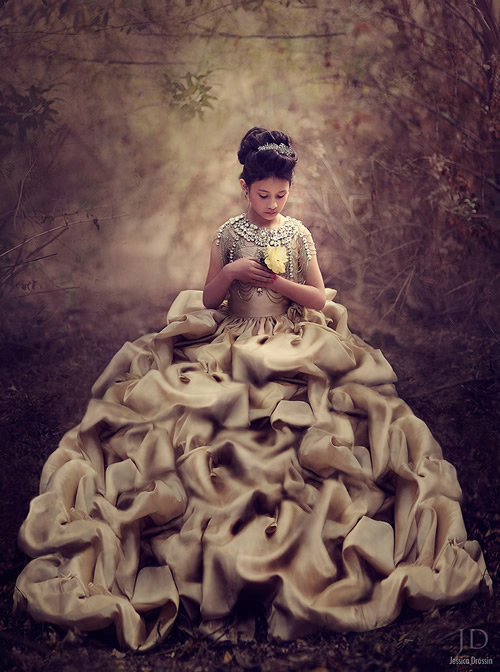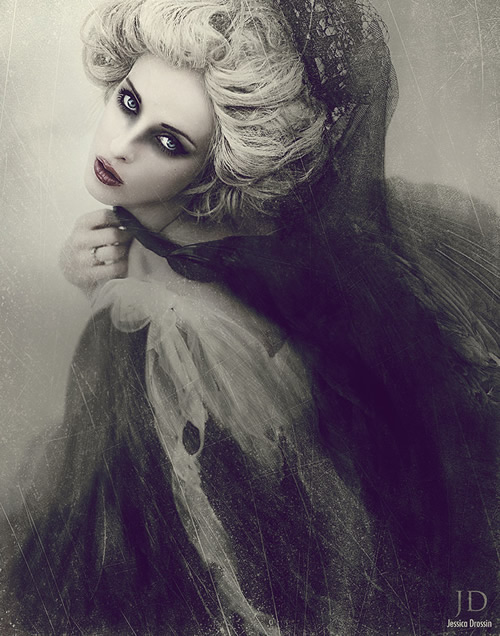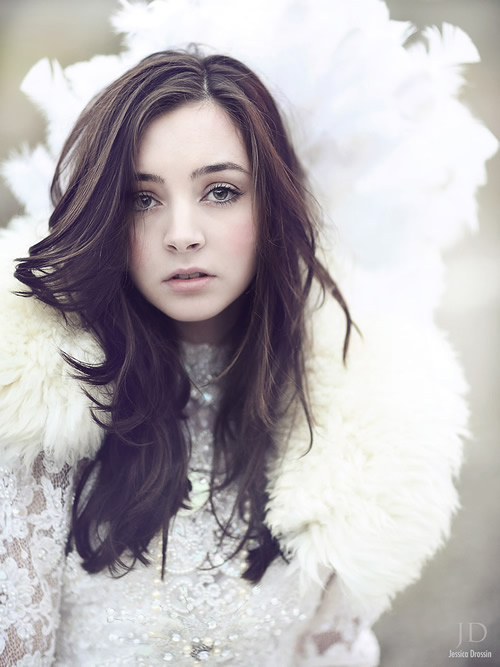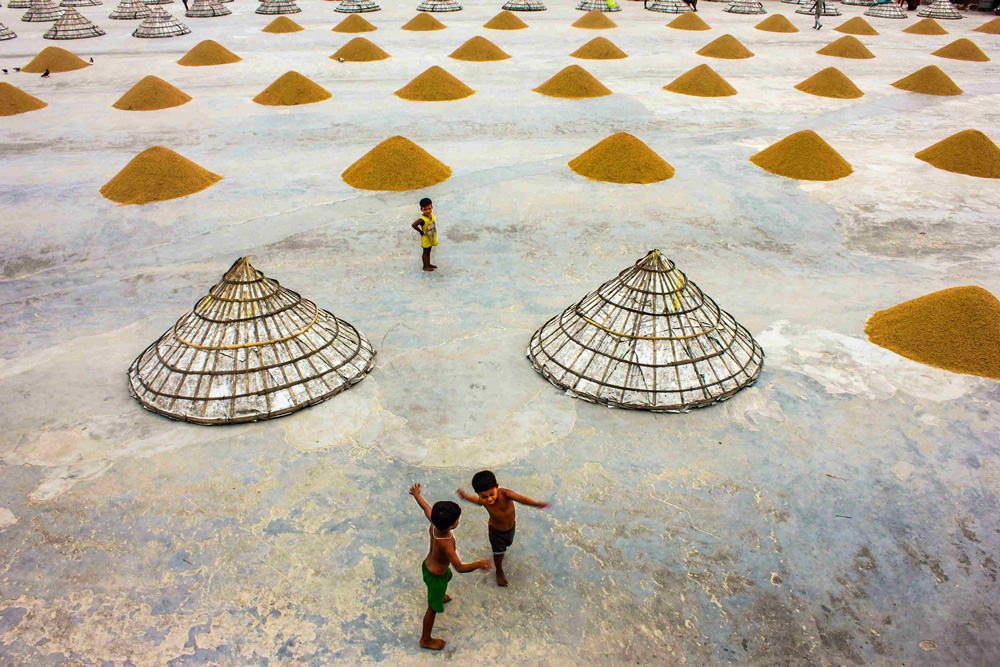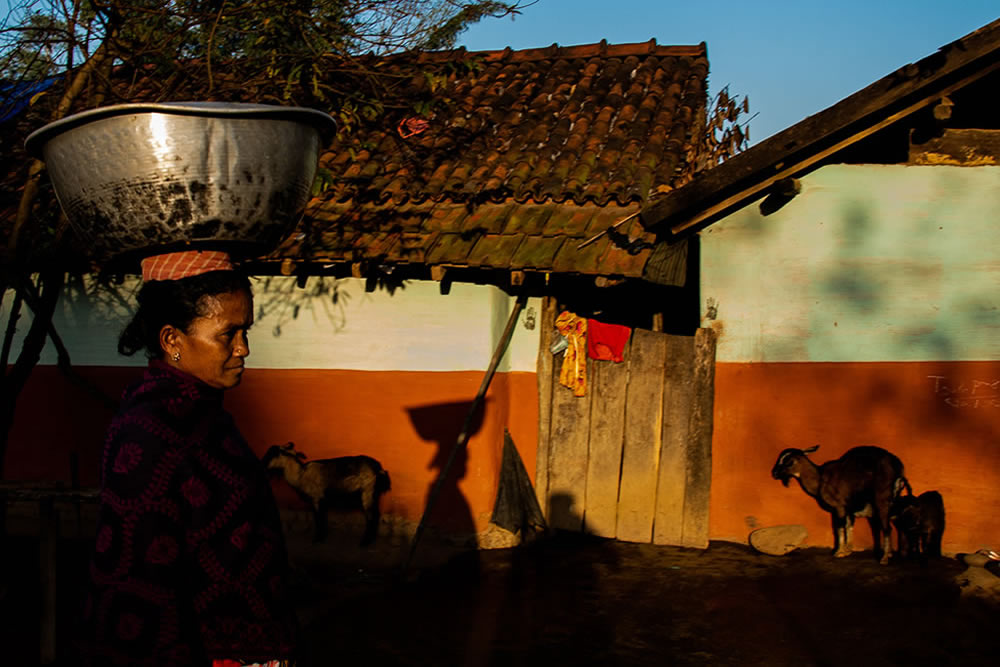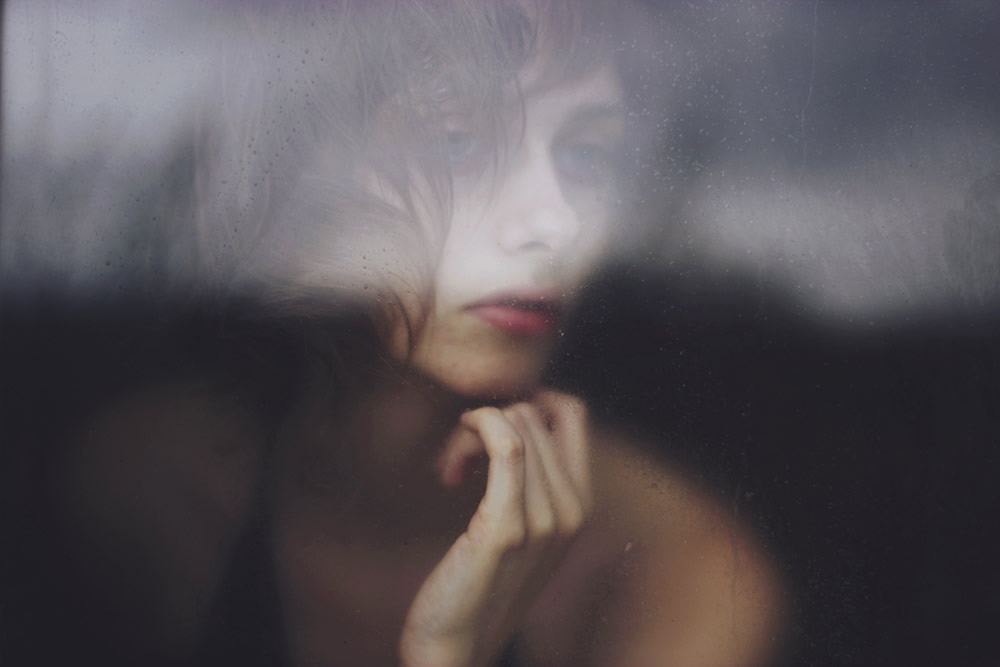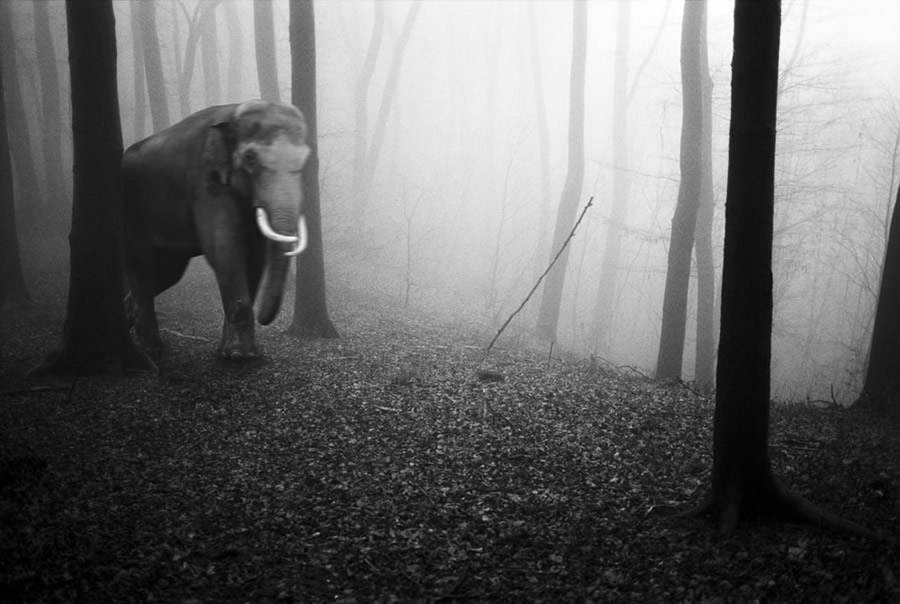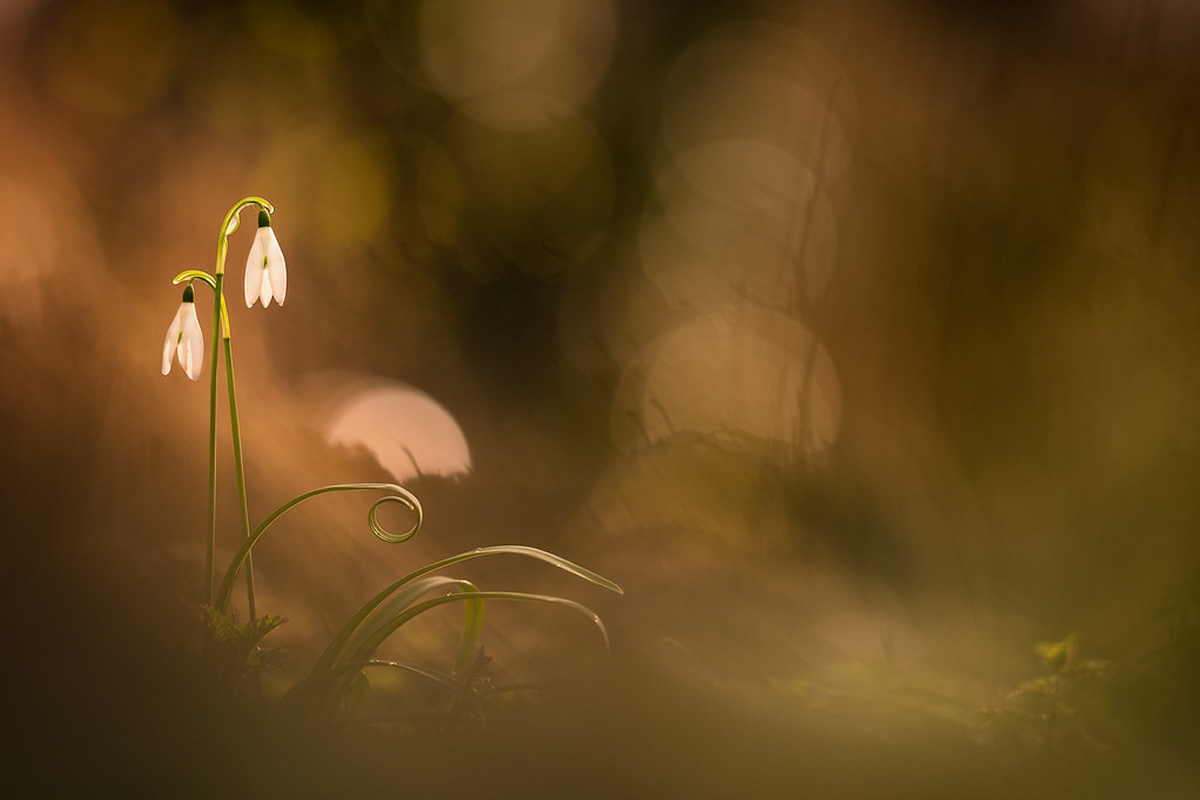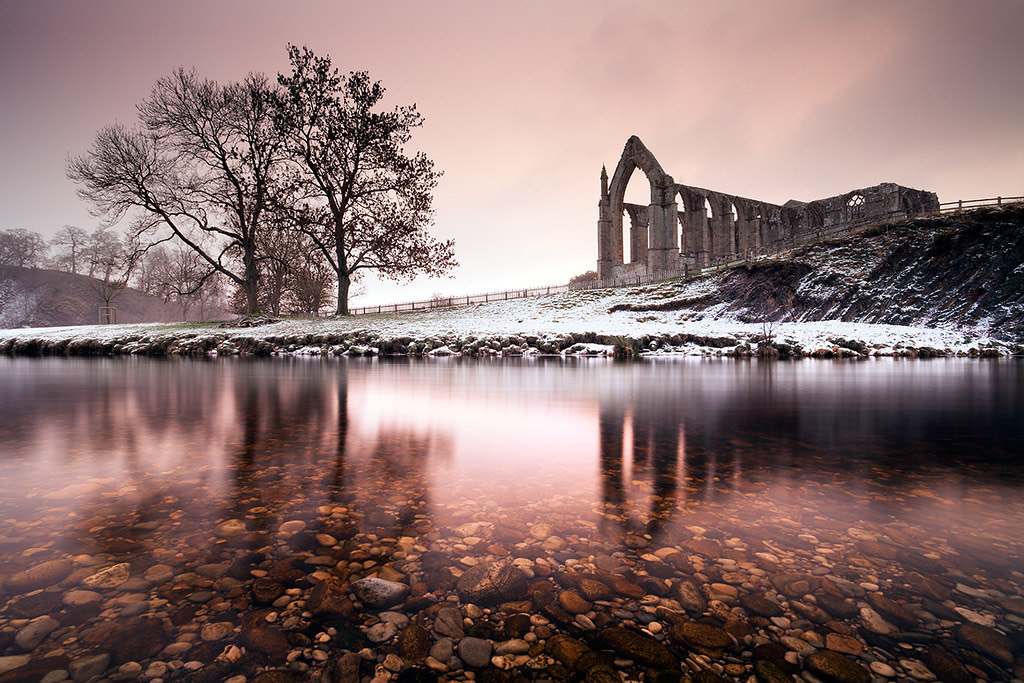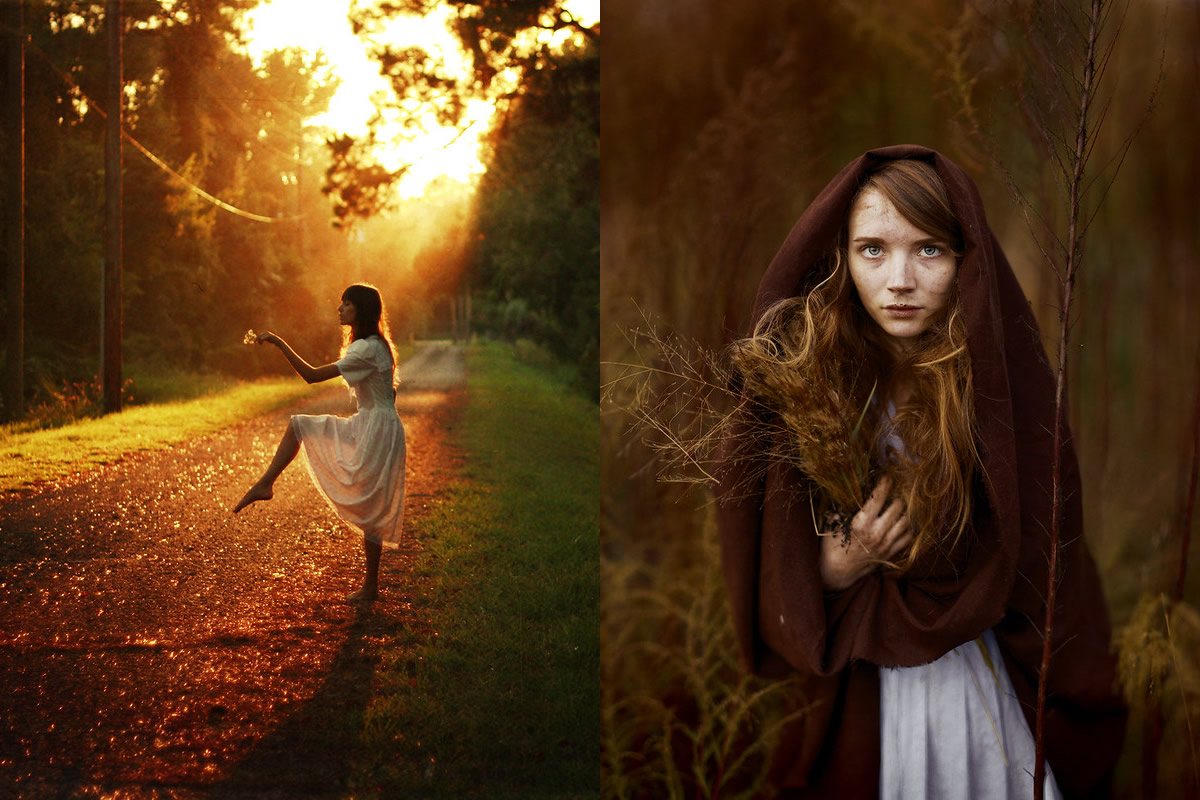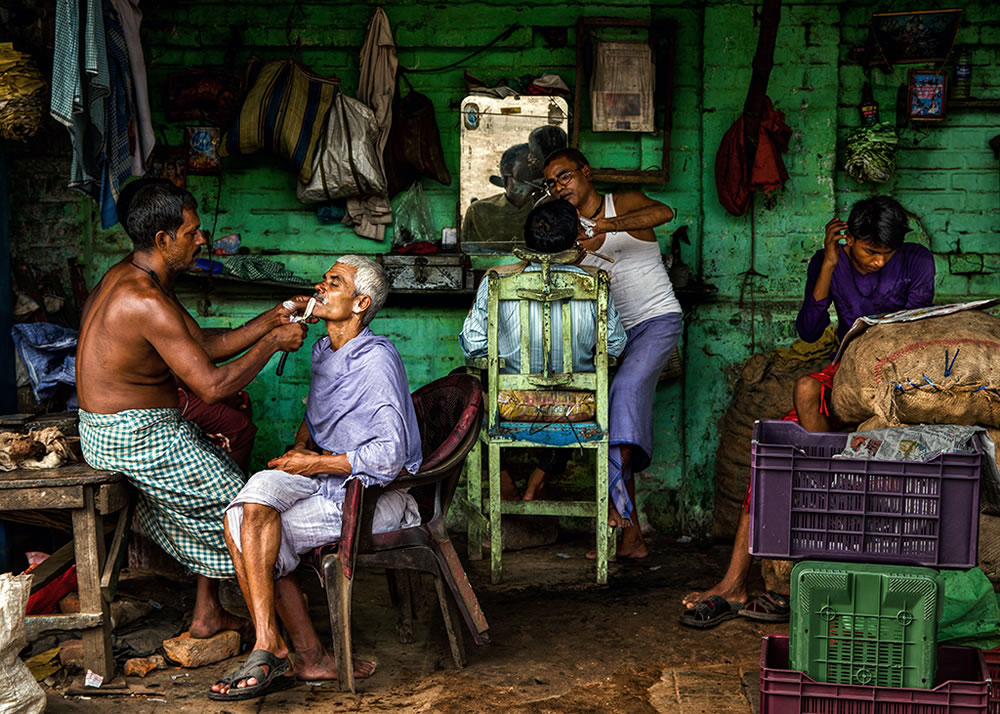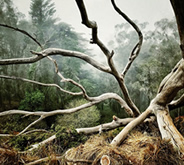This is so surreal with loads of precious expressions, Yes! Jessica Drossin is a portrait photographer from Los Angeles. She is well known for her beautiful texture works on portraits. Her idea of applying such strong textures to delicate portraits is amazing and wants us to try out too. In this showcase, such pleasant stories overall and this unique talent above all to inspire from.
About Jessica Drossin
Jessica Drossin is an internationally-published, self-taught, fine art portrait photographer based in Los Angeles. She has a Bachelor’s Degree in Fine Art (Painting), and previously worked for video game companies including Blizzard Entertainment. A professional photographer for five years, she has won numerous awards, including the 2013 Emerging Professional Fine Art Photographer from Digital Photo Pro Magazine. Her projects range from documenting a scoring session for the Lucas Arts film, “Red Tails” in Prague to creating book cover art worldwide. Her work has been featured in issues of Digital Photo Pro, Wedding Nouveau, and Practical Photography magazines. She shoots with a Canon 5D Mark iii, and specializes in capturing portraits with natural light.
Jessica has two young sons and is married to an orchestral music composer. She loves art, literature, her friends, family and being a part of the photography community.
How did photography happen to you?
I became interested in photography after the birth of my second child. I had left my job working for a video game company and was searching for a way to document my growing family as well as find artistic fulfillment. I had never been very interested in pursuing photography before, preferring the more free and tactile nature of painting and collage, but with the advent of digital photography it became an enjoyable way for me to express my creativity in my free time.
What is the secret to capture a great portrait?
I believe there are three main components to creating a great portrait:
- Good, interesting light to carve the subject out of the flatness of the two-dimensional plane.
- A solid composition. Simply relying upon the rule of thirds by shoving your subject to the left or right of the frame does not necessarily make for a compelling picture. Think about the lines and shapes that surround your subject and experiment with unusual angles.
- Develop an honest connection to your subject. Both the photographer and subject must be relaxed. The subject’s “photo face”—mastered from years of parental coaxing or a thousand iPhone selfies—needs to fade away for their real soul to shine through. Be open and try to build trust with your subjects by allowing them to see the back of the camera occasionally and when possible, offer them insight into why you are setting up shots certain ways.
How important is post production in your workflow?
For me, shooting and processing go hand in hand. When shooting, my goal is to create solid, well-constructed images that I will be able to transform into my final artistic vision once I’ve taken them into Photoshop. I really do try to get my shots to be as good as they can be in-camera, however, I would be terribly bored if I was not able to push and play with them in post to create what I see in my head. Because I am a photographer who really still considers myself to be more of a painter, the post processing aspect is critical to me feeling satisfied with the final image.
Your textures are so famous. Few words about that?
When I first began creating textures, I had no intention of selling them. They were just a fun way for me to add greater depth, color, or effects to an image. I think my textures have become well known because I put so much thought into how a creative portrait artist would want to utilize them. I spend a lot of time considering how the textures will affect skin tones, backgrounds, and look when they are printed. I am now creating overlays and hand-editing styled actions in addition to textures and hope that people will come to me for these post processing tools as well.
Your Gear?
I shoot with a Canon 5D Mark iii and primarily use my 85mm 1.2, 70-200mm 2.8, and 16-35mm 2.8 lenses. I also have “fun” lenses including a Lensbaby Composer, a 45mm Tilt Shift, and a 15mm Fisheye. I love my camera bag that looks more like a swanky purse from Shutterbag USA and my comfortable scarf-strap, from Camera Straps Made With Love. I do not use any flash or reflectors in my work.
Your Inspiration?
I am inspired by stories. I am an avid listener and people share very intimate stories with me. I am inspired by these real stories and reveal a portion of them in my photos. I am also inspired by words, lyrics, relationships, my children, and all the big and small details of life. I find lives to be very beautiful, even the heartbreaking, lonely parts that are perhaps a bit more nostalgic or even melancholy. There are plenty of photographers who can capture joy and happiness in a beautiful way, I strive to explore a different kind of beauty.
Few words of advice for young aspirants in this field?
Be yourself. And if you’re new to photography, you most likely do not know who YOU are yet. That is OK. You don’t need to have a style. Do what you love, do it a lot, and style will follow. Do not compare yourself to others. Do not listen to loudmouths who loudly proclaim their way is the only way. Enjoy the process. Take chances and allow yourself to make mistakes. It’s only photography.
Click on the image for better and enlarged view.
You can find Jessica Drossin on the Web :
Copyrights:
All the pictures in this post are copyrighted Jessica Drossin. Their reproduction, even in part, is forbidden without the explicit approval of the rightful owners.

